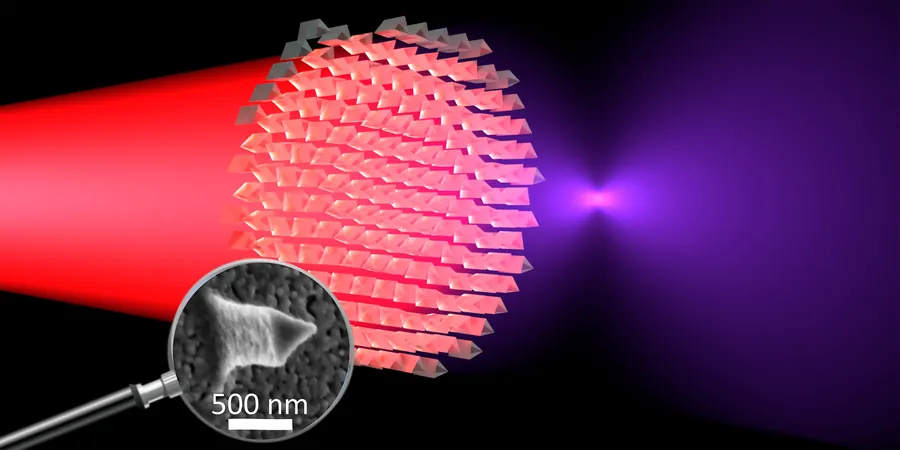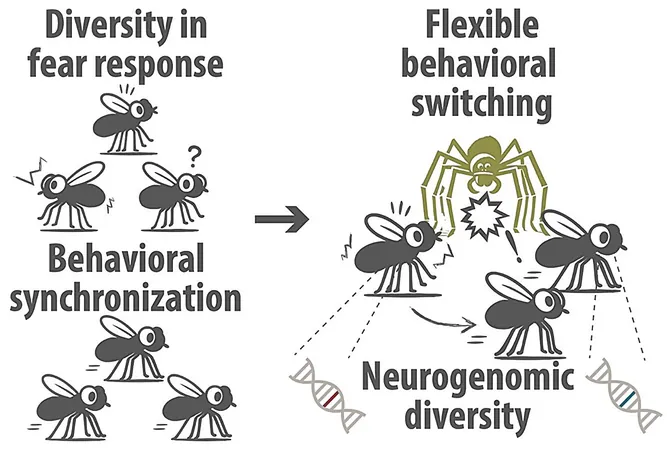
Breakthrough Ultra-Thin Lenses Transform Infrared Light into Visible Color!
2025-06-02
Author: Jacques
Revolutionizing Optical Technology: The Magic of Metalenses
In a groundbreaking development at ETH Zurich, physicists have introduced a revolutionary lens capable of converting infrared light into visible light—by effectively halving the wavelength of the incoming light! This innovative research, detailed in the prestigious journal Advanced Materials, is poised to reshape our understanding of optics.
From Bulky Cameras to Sleek Designs
For ages, lenses have been the backbone of optical devices, enabling everything from high-quality cameras to microscopes. However, these traditional components often come with bulkiness that poses limitations in modern technology. Even today’s sophisticated smartphone cameras rely on stacks of lenses, making them the thickest parts of the devices.
Meet Metalenses: The Future is Flat!
In recent years, the quest for slimmer optics has led to the creation of metalenses. These innovative creations are not only 40 times thinner than a human hair but also incredibly lightweight, since they don’t require the traditional glass construction. Researchers have utilized a special metasurface—comprising tiny nanostructures just a hundred nanometers wide and tall—to modify light direction more efficiently than ever.
Turning Infrared to Visible: The Science Behind the Magic
What sets this new technology apart is its ability to explore the fascinating realm of nonlinear optics. By harnessing materials like lithium niobate, typically employed in telecommunications, scientists have developed methods to manipulate light at a fundamental level. When infrared light interacts with these materials, it can produce visible wavelengths, just like the green light from a laser pen.
A Game-Changing Fab Process
Professor Rachel Grange and her team have developed an innovative approach to fabricating these nanostructures. Combining chemical synthesis with precision nanoengineering allows for the mass production of metalenses—crucial for scalability in practical applications. This method utilizes a stamping technique that resembles Gutenberg’s printing press, enabling efficient creation of high-quality lenses.
A New Era of Optical Devices
These ultra-thin lithium niobate metalenses are not merely capable of focusing light; they can also reshape it. By sending infrared light through the metalens, researchers managed to produce visible light at a wavelength of 400 nanometers, opening the door to exciting new applications.
Applications Beyond Imagination
The potential uses for these cutting-edge lenses are vast and awe-inspiring. From ensuring the authenticity of banknotes and artworks to enabling IR sensors and advanced microscopy, the implications are monumental. Their nanostructures are so small that they remain invisible to the naked eye, making them ideal for security features.
The Future is Bright—And Visible
As we stand on the brink of this new optical frontier, Professor Grange remarks, "We have only scratched the surface so far and are thrilled to witness the transformative effects this cost-effective technology could unleash in the future." With the ability to render previously unseen wavelengths visible, a brighter, more innovative future is just around the corner!









 Brasil (PT)
Brasil (PT)
 Canada (EN)
Canada (EN)
 Chile (ES)
Chile (ES)
 Česko (CS)
Česko (CS)
 대한민국 (KO)
대한민국 (KO)
 España (ES)
España (ES)
 France (FR)
France (FR)
 Hong Kong (EN)
Hong Kong (EN)
 Italia (IT)
Italia (IT)
 日本 (JA)
日本 (JA)
 Magyarország (HU)
Magyarország (HU)
 Norge (NO)
Norge (NO)
 Polska (PL)
Polska (PL)
 Schweiz (DE)
Schweiz (DE)
 Singapore (EN)
Singapore (EN)
 Sverige (SV)
Sverige (SV)
 Suomi (FI)
Suomi (FI)
 Türkiye (TR)
Türkiye (TR)
 الإمارات العربية المتحدة (AR)
الإمارات العربية المتحدة (AR)